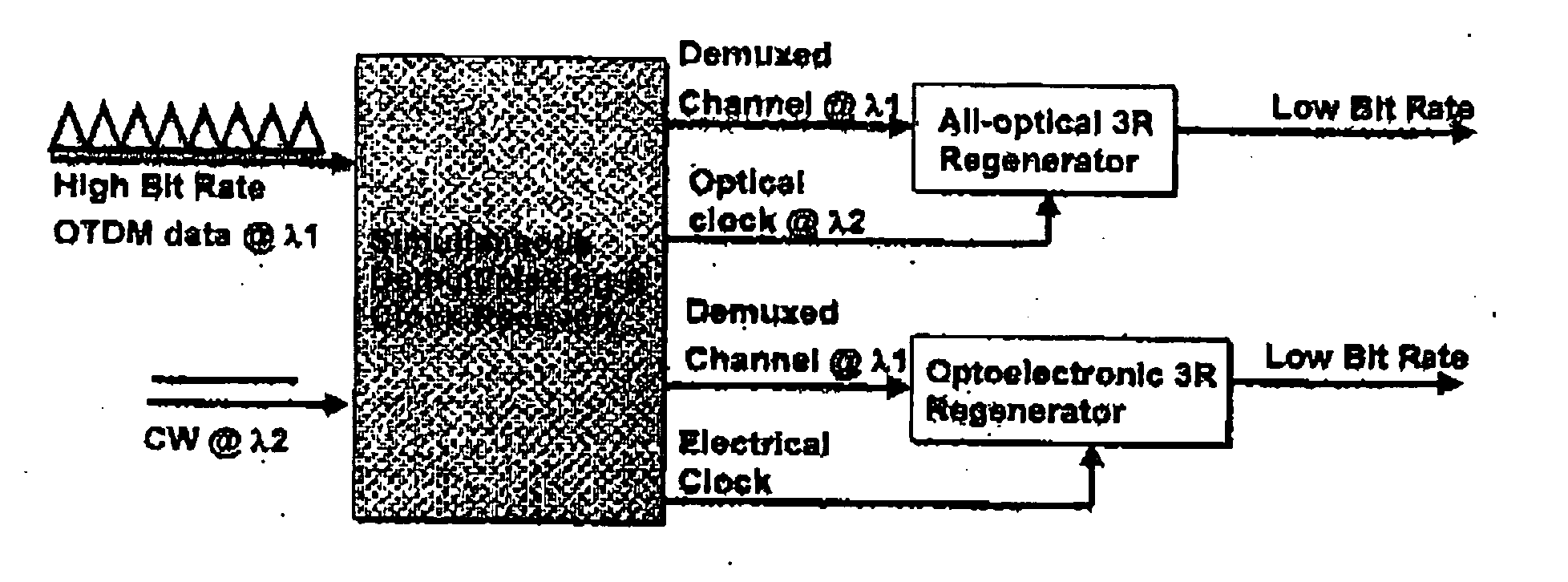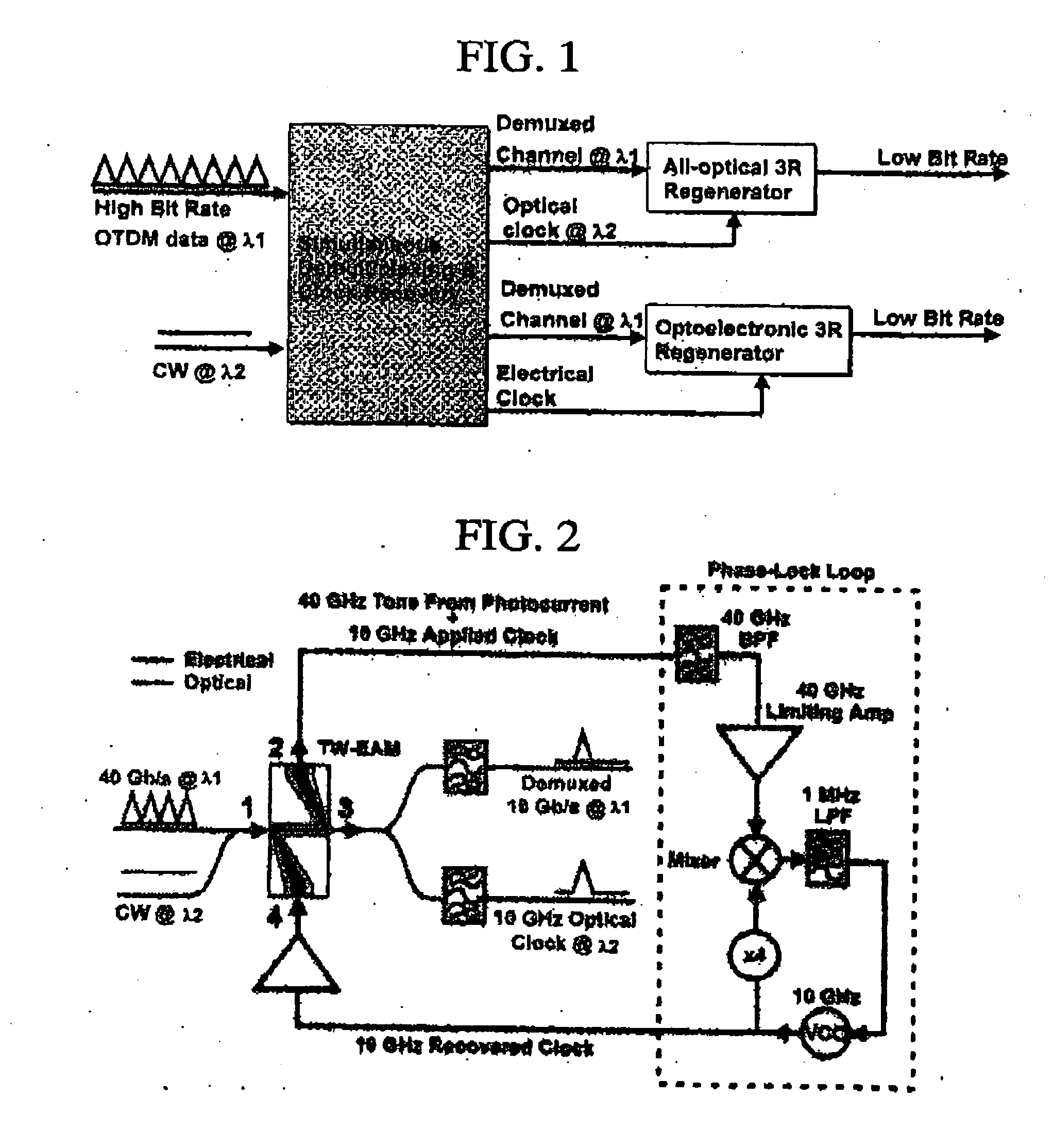Apparatus for simultaneous OTDM demultiplexing, electrical clock recovery and optical clock generation, and optical clock recovery
a technology of optical clock and multi-core processor, applied in the direction of optics, instruments, electrical apparatus, etc., can solve the problems of ambiguity and crosstalk, high cost, and use of circulator, so as to reduce the number of high-speed components of the otdm network node, increase reliability, and reduce costs
- Summary
- Abstract
- Description
- Claims
- Application Information
AI Technical Summary
Benefits of technology
Problems solved by technology
Method used
Image
Examples
Embodiment Construction
[0039] The invention presents a new scheme for simultaneously OTDM signal demultiplexing, electrical clock recovery and optical clock generation using single one TW-EAM in order to reduce the cost and complexity of the network node. Except that the TW-EAM works as a compact demultiplexing receiver, another possible application is to convert high bit rate OTDM data to low bit rate.
[0040]FIG. 1 is a schematic diagram that illustrates a general function of the invention. The ability to convert all channels of a high-speed OTDM data stream to a low-speed data stream with correct synchronization is significant at a network node for future processing such as from core network to access network. Thus, the relatively low-speed and low-cost equipments can be used for switching and detection purposes even when an ultra-high speed OTDM data stream enters the node. Depending on the types of the 3R regenerators (all-optical or optoelectric), either generated optical clock or recovered electrica...
PUM
| Property | Measurement | Unit |
|---|---|---|
| frequency | aaaaa | aaaaa |
| frequency | aaaaa | aaaaa |
| photocurrent | aaaaa | aaaaa |
Abstract
Description
Claims
Application Information
 Login to View More
Login to View More - R&D
- Intellectual Property
- Life Sciences
- Materials
- Tech Scout
- Unparalleled Data Quality
- Higher Quality Content
- 60% Fewer Hallucinations
Browse by: Latest US Patents, China's latest patents, Technical Efficacy Thesaurus, Application Domain, Technology Topic, Popular Technical Reports.
© 2025 PatSnap. All rights reserved.Legal|Privacy policy|Modern Slavery Act Transparency Statement|Sitemap|About US| Contact US: help@patsnap.com



